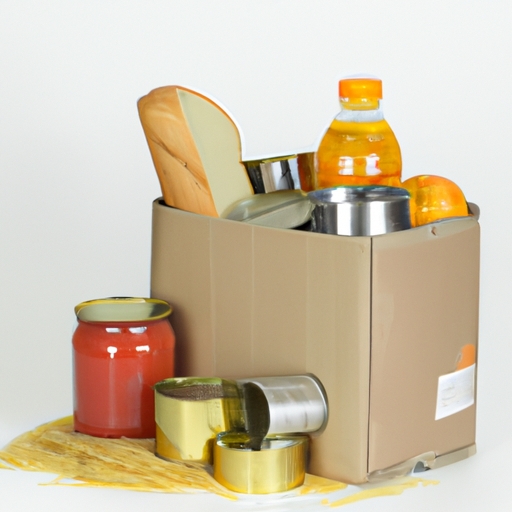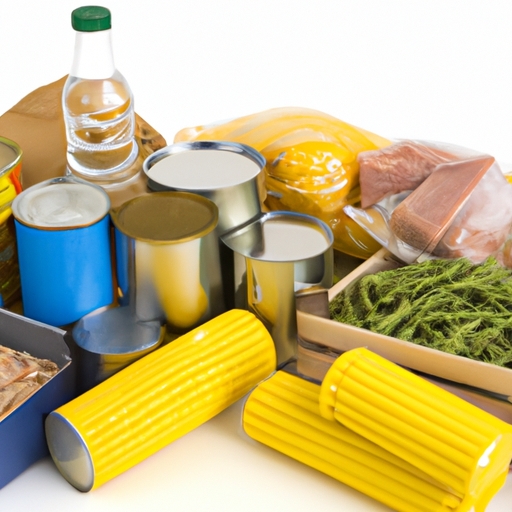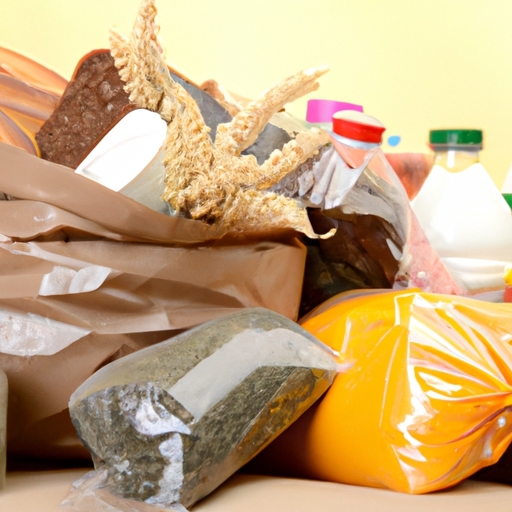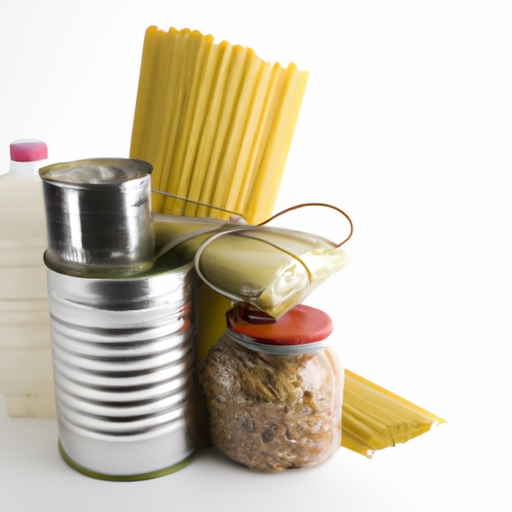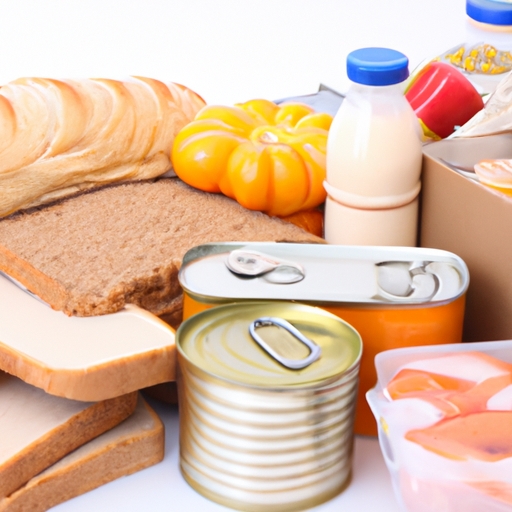Emergency Survival Food List
Introduction
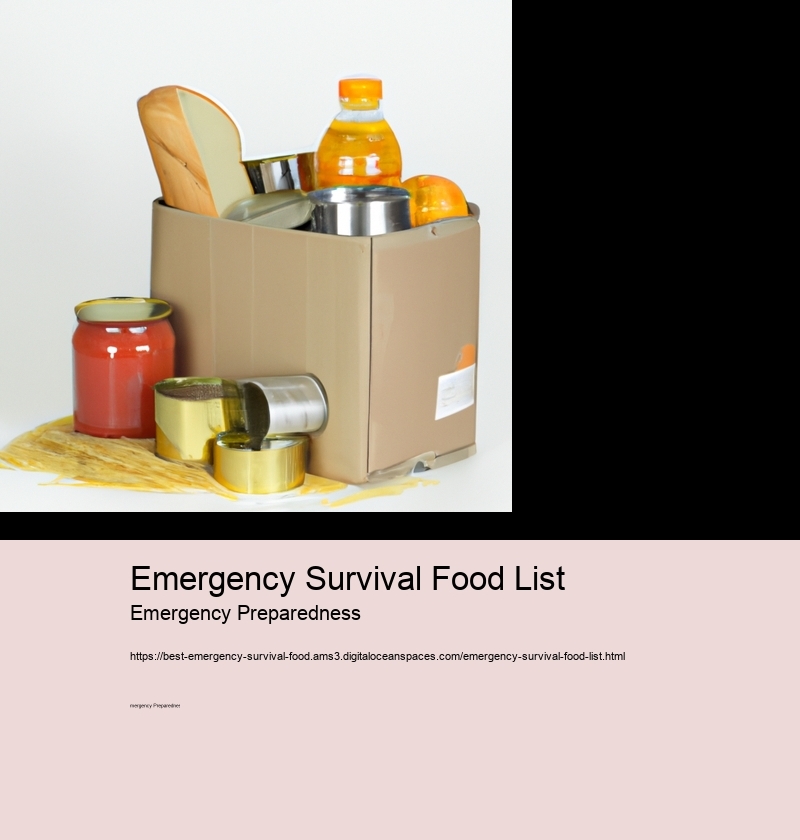
Introduction
Introdution: Emergeny survival food list is a very important topic to consider for anyone wanting to be prepared in case of an emergency. It is vital to have enough food and water supplies on hand in readiness for any potential disasters or emergencies. (!) A well-stocked pantry with a variety of items can help you get through tough times, so here's a list of some great foods that are likely to keep you nourished during an emergency.
First, it’s essential to stock up on canned goods such as vegetables, fruits, soups, beans and tuna fish. Canned goods last for years and can provide sustenance without needing to worry about refrigeration or spoilage. Additionally, dried legumes are also good options since they are long-lasting and full of fiber and protien. Furthermore, nuts like almonds or walnuts make great snacks that contain healthy fats as well as vitamins and minerals.
Moreover, grains like oats and quinoa are essential for providing energy throughout the day as they contain complex carbohydrates which release energy slowly over time. Some other grains such as couscous or barley may also be useful if you want switch things up occasionally! Furthermore, flour is also necessary for baking breads or making pancake batter etc.
Another great option is powdered milk which can be used in many different ways including making smoothies or adding it into sauces/soups for added nutrition value. Plus, frozen meat/poultry will stay fresh longer than unfrozen meats so that's something worth considering too.(!) Lastly, don't forget to store extra bottles of water just incase your tap water runs out!
In conclusion , having an emergency survival food list on hand will ensure that you'll always have something nutritious when needed most! Just remember to rotate items every now & then so nothing gets expired & everything stays fresh!
Necessary Food Items
Necessary Food Items for an Emergency Survival Food List are a must! There's no (substituting) them when it comes to surviving in a crisis situation. Canned goods, such as vegetables, fruits and beans, are great options; they have long shelf lives and can provide vital nutrition. Grains like rice, pasta and quinoa, as well as nuts and seeds, provide valuable fuel for the body. Powdered milk is a good source of calcium and protein. Dried fruit is full of vitamins and minerals but should be eaten sparingly due to its high sugar content.
Moreover, though it may not seem appetizing at first thought, jerky is an excellent source of protein that will last for months when stored properly. Additionally, peanut butter is a great option too; it provides healthy fats and proteins while also having long shelf life if kept sealed. Also consider storign energy bars or granola bars; these are packed with nutrients that will give you energy when needed most!
Finally, having clean water is essential for survival - so don't forget to add water purification tablets or filters to your list! Transitioning from one form of sustenance to another can be difficult; however these necessary items will help ensure that you make it through any emergency alive!
Non-Perishable Foods
Non-perishable foods are an essential part of any emergency survival food list! These items (which don't spoil) can provide vital sustenance in a time of need. Examples include canned goods, peanut butter, crackers, energy bars and more. While there's nothing quite like fresh produce for nutrition and flavor, non-perishables offer a much longer shelf life. This means they can be stored away for when you really need them.
Moreover, many non-perishables contain high amounts of protein and carbohydrates that will keep you energized during an unexpected crisis. Canned tuna and chicken, as well as lentils or beans are all great sources of nutrients that won't deplete over time. Plus they're versatile – you can use them to make soups, sandwiches or even add them to salads!
Furthermore, it's important to remember that these products take up minimal space so you can stock up your pantry without worrying about storage limitations. Additionally, most come with long expiration dates so you won't have to worry about replacing them too often either.
Finally, having a few non-perishable items on hand is always wise - just in case the worst should happen! Therefore including these items in your emergency survival food list is sure to bring peace of mind -- knowing that if necessary you'll be able to sustain yourself with ease!
Packaged and Canned Foods
Packaged and canned foods are a great go-to item when stocking up on emergency survival food. These items often come in long shelf life and contain essential nutrients that are necessary for sustenance during a crisis (or other) situation. They also can be obtained relatively cheap, making them the ideal choice for an emergeny survival food list!
Furthermore, they require very little preparation to consume. The packaging is designed to allow for easy access even without utensils or fire - excluding some items like soup cans which require more effort than simply opening a bag of chips or crackers. Additionally, their portability makes it easier to transport them from one location to another if needed.
However, there are some drawbacks to keeping these types of food on hand for emergency situations. For instance, some may not have the most appetizing taste or texture due to being processed and/or canned. Moreover, they do not provide as much variety as fresh produce would; therefore people may become bored with eating the same things over a prolonged period of time.
Despite this though, packaged and canned foods remain a viable option for emergency survival food lists! Their convenience and affordability make them hard to pass up when looking into ways of providing nourishment during uncertain times. Plus, with thoughtful planning ahead of time you can ensure that your pantry contains both nutrient-rich staples and more flavorful additions so everyone can find something tasty while still getting the sustenance they need!
Quick Meals and Snacks
Quick meals and snacks are essential for emergency survival food list! (Negation) Not only should you have enough supplies to last you a few days, but also quick and easy-to-prepare meals and snacks. It's important to remember that during an emergency situation, the amount of time you have to prepare meals is limited. You want items that require minimal preparation or cooking time.
(Interjection) Wow, there are plenty of options available! From canned meats and vegetables to dried fruits and nuts, the choices are endless. You can also stock up on energy bars, pre-made smoothies or shakes, crackers with peanut butter or cheese, jerky, granola bars and more. Additionally, don't forget about packaged instant soups and oatmeal as they make great additions too.
(Contraction) Moreover, it's wise to include items that don't require refrigeration since it may not be available in an emergency situation. For instance: canned tuna fish; hard boiled eggs; non-perishable beans like lentils or chickpeas; protein powder; nut butters; dried fruit like apricots or raisins; nuts like almonds or walnuts; cereal such as granola; trail mix; rice cakes and more.(Transition phrase) With all these options in mind...
You can create your own unique combination of foods for your emergency survival food list! This way you'll always have something quick and delicious when needed most. Plus add variety by including things such as fresh fruits like apples or oranges if possible–just try to avoid anything that requires refrigeration unless absolutely necessary!
Water Purification Methods
Water purification methods are a must-have in any emergency survival food list! Boiling, filtering and chemical treatment are all excellent ways to clean water and make it safe for drinking. Boiling is the simplest and most effective way of purfication (especially when you don't have access to other means). You simply have to bring the water to a rolling boil for at least one minute, let it cool off, then you can drink it. Another great method is filtration which can be done with a water filter that removes impurities. As an additional benefit, this process also makes the water taste better. Lastly, chemical treatment involves adding certain chemicals such as chlorine or iodine to kill bacteria and other microorganisms present in the water. This should only be done as a last resort though!
In conclusion, these three methods are great for ensuring your safety when dealing with contaminated water during an emergency situation. Furthermore, having the right supplies on hand will go a long way towards helping you survive during tough times. Therefore, if you're looking to build up your emergency survival food list then don't forget to include items necessary for purifying water! Transition: Furthermore, there may be times when...
Cooking in an Emergency Situation
Cooking in an emergency situation can be a tricky task. (It) requires knowledge and preparation to ensure that the food you cook is safe and nutritious. There are several items that should be included on an emergency survival food list, such as: water, canned foods, grains, dried fruits & nuts, spices and herbs, sugar, condiments and oils.
However, it's important not to forget about utensils needed for cooking too! These could include: pots & pans (with lids), cutting boards & knives, spoons & spatulas(s), measuring cups/spoons and a stove or campfire grill. Additionally, having a few convenience items like matches/lighters or fire-starters can come in handy if you need to get a fire going quickly.
Furthermore, when cooking in an emergency scenario it's essential to take into account the nutrition of the food as well. Whole grains provide complex carbohydrates which give us energy for longer periods of time than simple sugars do; while proteins are also necessary for muscle building and tissue repair. Fats should also be incorporated in moderation since they are rich sources of vitamins A & E.
Moreover, there are some basic principles to consider when cooking on any type of stove or over an open flame: avoid cross contamination between raw meat/fish/poultry and other ingredients; use separate utensils for different types of foods; clean everything properly after cooking; practice proper hygiene by washing hands with soap before handling any foods; make sure all ingredients are cooked thoroughly before consumption; and try not to reuse marinade used with raw meats! Moreover, don't forget that safety always comes first so never leave your food unattended while it's being prepared!
In conclusion, knowing what items to include on an emergency survival food list as well as what principles should be followed when preparing meals is key for successful cooking during an emergency situation! Remember - safety always comes first!!
Conclusion
Emergency preparation is important for a variety of situations. A food list can be a great way to prepare for any emergency. (It) can help you make sure you have enough supplies and nutrients in case of an emergency.
Firstly, it's important to stock up on non-perishable items like canned goods, dried beans and grains, rice and noodles. These will last longer than fresh food and don't require any cooking or refrigeration. You should also include some protein sources such as cans of tuna or salmon, peanut butter, nuts and seeds. Additionally, having a few comfort foods like crackers or granola bars will provide some much needed morale boost during tough times.
Nextly(!), it's a good idea to keep some basic kitchen staples on hand as well. Salt, sugar, seasonings and oil are essential for flavoring many dishes while flour can be used for baking breads or creating thickening agents for soups and sauces. Moreover, making sure you have a decent selection of vegetables is key to maintaining adequate nutrition levels; frozen veggies are great because they're cheap but still nutritious!
Finally(!), it's important to remember that water is the most critical component when stocking your pantry for emergencies; make sure to store at least one gallon per person per day in order to stay hydrated! In conclusion, building an emergency survival food list is an essential part of being prepared; by ensuring that you have the necessary supplies on hand, you'll be able to remain safe no matter what happens!
